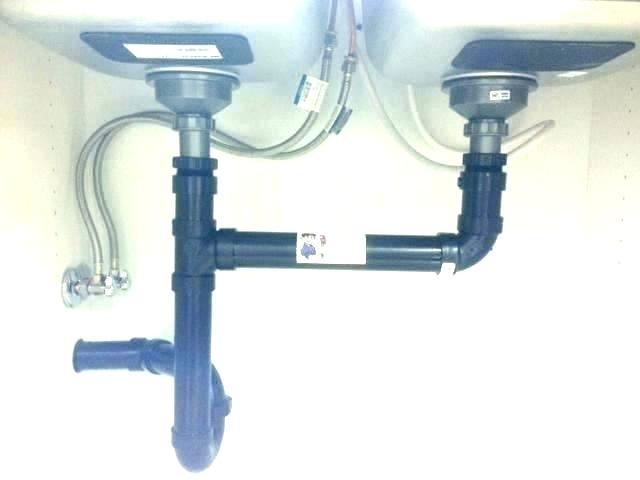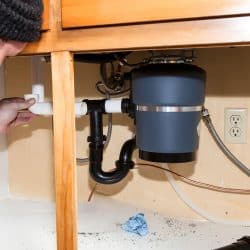Confirmed Solutions for Fixing a Dripping Garbage Disposal
Confirmed Solutions for Fixing a Dripping Garbage Disposal
Blog Article
Presented here in the next paragraph you can find more good information relating to Garbage Disposal Leaking From Bottom.

Garbage disposals are vital cooking area devices that assist in taking care of food waste effectively. Nonetheless, a dripping garbage disposal can be an irritating and unpleasant trouble to deal with. The good news is, numerous leaks can be taken care of quickly with a couple of easy steps. In this post, we will certainly discuss just how to deal with a dripping garbage disposal successfully.
Intro
Garbage disposals are installed under cooking area sinks and are developed to shred food waste into smaller pieces, allowing it to go through the pipes system easily. While these tools are normally trusted, leaks can occur in time because of wear and tear, loosened links, or damage to the unit.
Step-by-Step Overview to Repairing a Dripping Waste Disposal Unit
Shut off the Power
Prior to trying any repair services, ensure that the power to the garbage disposal unit is shut off to stop the risk of electric shock.
Locate the Leak
Determine the specific location of the leak and determine the cause
Tighten up Connections
Use a wrench to tighten any kind of loose links in between the disposal unit and the plumbing system.
Change Seals or Gaskets
If the leak is because of worn seals or gaskets, eliminate the old components and replace them with brand-new ones.
Patching Cracks or Openings
For fractures or openings in the disposal unit, usage epoxy or an appropriate patching product to seal the broken location.
Recognizing the Source of the Leak
Before attempting to fix a leaking garbage disposal, it is important to determine the resource of the leak. This can commonly be done via visual inspection or by performing easy tests.
Visual Inspection
Evaluate the waste disposal unit unit thoroughly for any kind of indications of water leakage. Pay close attention to locations around seals, gaskets, and link points.
Checking for Leaks
One way to test for leaks is by running water through the disposal device and checking for any type of noticeable indicators of leak.
Usual Causes of Leaks in Garbage Disposals
Worn Seals and Gaskets
Seals and gaskets play a vital role in stopping water from dripping out of the waste disposal unit. With time, these components can deteriorate, bring about leaks around the disposal unit.
Loose Links
The connections between the waste disposal unit and the pipes system can end up being loosened in time, creating water to leakage out throughout operation.
Fractures or Openings in the Disposal System
Physical damage to the waste disposal unit, such as fractures or holes in the housing, can likewise result in leakages.
Devices and Materials Needed for Repairing a Leaking Garbage Disposal
Prior to starting the repair service procedure, collect the required tools and products, including a screwdriver, adjustable wrench, plumbing's putty, replacement seals or gaskets, and epoxy or patching product for repairing fractures or holes.
Testing the Waste Disposal Unit After Repair Service
When the repair work is full, check the waste disposal unit by running water with it to guarantee that the leakage has actually been resolved.
Preventive Upkeep Tips to Prevent Future Leaks
To prevent future leaks, it is essential to execute routine upkeep on your garbage disposal. This consists of keeping it tidy, avoiding putting non-food things or hard things down the disposal, and periodically looking for leakages or other problems.
Verdict
Finally, repairing a dripping waste disposal unit is a relatively simple process that can be finished with basic devices and materials. By adhering to the steps detailed in this post and practicing preventive upkeep, you can maintain your waste disposal unit in good working problem and avoid costly repair services in the future.
What to Do About a Leaking Garbage Disposal
A leaking garbage disposal often goes unnoticed until you confront a sopping cabinet, a foul-smelling puddle, or an audible drip-drip-drip from the unit. The fix can be frustrating, too, because the leak can stem from a number of components in the system. Fortunately, with a little sleuthing, you can zero in on the leak and—depending on the exact location—stop the icky oozing and repair the component that caused it. Worst case scenario, if it turns out that the garbage disposal must be replaced, installing a new one is a reasonable do-it-yourself task for those with basic plumbing skills. Read on to keep the cash you’d otherwise hand over to a pro.
Prepare to find the leak
Prior to testing the garbage disposal for leaks, unplug it at the wall outlet and turn off the power from the breaker box to prevent electrical shock. Then insert a watertight sink stopper into your sink drain and wipe the unit dry with a clean cloth. In any handy container, mix a few drops of food coloring into a few cups of water, and pour the dyed water onto the sink stopper to help you locate the leak.
Investigate the source
the top, where the disposal meets the sink drain the side, where the dishwasher hose or main drain pipe connects to the disposal or the bottom of the unit Inspect each of these locations while gliding a light-colored rag over the unit; the dyed water will readily show on the rag and reveal the location of the leak. If a leak isn’t immediately apparent, remove the sink stopper and pour a few more cups of dyed water down the sink drain, then check for leaks again. Leaks near the top of the unit are more likely to show themselves while the sink is plugged, while side and bottom leaks are more noticeable while the sink is unplugged.
The metal sink flange that sits directly inside the sink drain is typically sealed around the top with plumber’s putty (a clay-like sealant) and then secured from under the sink with bolts. If the plumber’s putty deteriorates, or the bolts loosen, the flange can no longer form a watertight seal between the sink drain and the disposal—which could cause a leak at the top of the unit.
To reseal the leaky flange, you must first detach the garbage disposal. Start by loosening the screws securing the main drain pipe to the disposal, then loosen the screws in the metal clamp securing the dishwasher hose to the disposal and detach the drain pipe and dishwasher hose from the disposal. Loosen the screws in the mounting ring that connects the disposal to the metal mounting assembly beneath the sink, then pull down the disposal and carefully set it on a clean, dry surface. Loosen the bolts in the mounting assembly with a wrench, then pull down the mounting assembly and set it near the disposal.

I came across that blog post about Tips on Fixing a Leaking Garbage Disposal when doing a search on the internet. Be sure to set aside a second to share this content if you enjoyed it. Thanks so much for your time spent reading it.
Call Today Report this page